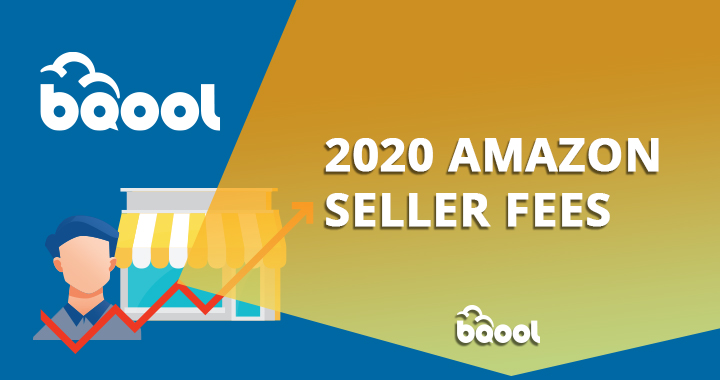How to Optimize Your Amazon Listings

Just like Google and Bing, Amazon is also a search engine, so it falls under the laws of search engine optimization (SEO). In other words, you can tweak your product description and store content to fit Amazon’s algorithms and help your products reach a higher number of customers.
Many marketers believe Amazon SEO is the most powerful sales and marketing tool because it leads to direct sales. In other search engines, many users search for answers to questions, which leads them to blog posts and articles, but they don’t necessarily make a purchase on a website.
For Amazon, there’s a very high chance that the customer searching for your particular product will actually end up buying it. It’s the most powerful form of traffic – instead of trying to figure out the audience that needs your product and is willing to buy it, the users find you themselves by entering keywords in Amazon’s search box.
Given this, your Amazon store must be search engine optimized to achieve the best sales results.
Also, Amazon often updates its algorithms to ensure that the most relevant results are shown to users who search for a particular product.
This is why we’re bringing you this up-to-date guide on how to do SEO for your Amazon Store in 2020 according to Amazon’s most recent search guidelines and algorithms.
1. Pinpoint Target Keywords
Before you start creating content for your Amazon store and your product descriptions, you should decide on the exact keywords that you want to focus on.
It’s smart to focus on long-tail keywords that have high search volumes but are lower in competition.
After you decide on which primary keywords you want to target, you can expand your keyword list with secondary, related keywords. For example, if your primary keyword is “men’s running shoes”, you can also include “men’s running sneakers”, “men’s trainers”, etc. to cover the majority of search queries related to your product.
Your keyword list will be your primary guide when you start creating content. If you start outsourcing your writing work to outside professionals or agencies, they can start easily implementing them for SEO from their very first texts.
Here are some of the services that you can use to discover keywords that are popular on Amazon, along with their search volumes and competition:
- TwinWord Keyword Tool – a keyword discovery and analysis tool from Google which includes data from Amazon
- Sellerapp – a free Amazon keyword tool to enable to optimize Amazon listing with the best Amazon keywords
- io – Amazon-tailored search volumes and keyword suggestions from a popular keyword tool for all search engines
- Scientific Seller – a free keyword tool app specifically designed for Amazon sellers
When you start creating your targeted keywords list, you can also cross-research data from multiple keyword tools to compare their search volumes and other data points. Also, if you already have a keyword list based on Google’s Keyword Planner for your website, compare how these keywords rank on Amazon instead.
2. Craft Unique Content and Descriptions
If the content is plagiarized, Amazon will lower your ranking in search results or you may even get your account suspended.
Your store description and product texts should be a golden mean between writing for Amazon’s search engine and writing captivating texts for customers. Therefore, your product descriptions should not just be a bunch of keywords with no coherent story, but a beautiful, story-telling description where keywords are included subtly.
If you’re not much of a wordsmith and you want to make sure your content is up to par, you can use professional services, where you can hire writers to work on your content for you and make it SEO-friendly.
Both your Amazon store description and your individual product descriptions should be optimized in order to achieve the best results.
If you still don’t know where to start to write compelling, informative and unique product descriptions, you can learn how to write Amazon product descriptions that sell here.
3. Localize Your Product Descriptions
If you’re targeting a global audience, it’s also recommended that you translate and localize your product descriptions to other languages other than English. People prefer to shop in their native language. A survey shows
More than 3,000 global consumers in 10 non-English-speaking countries in various regions and found that an astonishing 75% prefer to do online shopping in their native language. 60% of the respondents said that they rarely or never buy from English-only websites.
So if your product descriptions are not localized, you may miss out on this potential revenue.
4. Optimize in Compliance with Amazon’s Terms of Service
When it comes to Amazon, you don’t have to do much thinking, research or intuitive action: the way you should optimize your content is actually outlined in the company’s guidelines.
Amazon Terms of Service clearly states which content marketing and optimization methods are allowed and encouraged, and which will be penalized.
In its study of 2019 for Amazon SEO, JM Internet Group summarized it the best: “products that sell rank on Amazon and products that rank on Amazon sell”.
In other words, you should look at Amazon as your partner, which will help you sell your products and not a search engine that you can trick using illicit techniques. If you consistently sell products with great marketing efforts and high-quality products, Amazon will return the favor by placing them at the top of their search results.
5. Get Optimal Reviews
Positive reviews are a huge part of the overall algorithm that goes into ranking number 1 on Amazon on a particular keyword. You definitely should not use illicit techniques to gather positive reviews, but there are several ways to get reviews from your happy customers:
- send a follow-up email asking for a review
- introduce an Early Reviewer Program
Always make sure that your review-capturing strategies are in line with Amazon’s Terms of Use. If you use black hat techniques for getting reviews on Amazon, they might end up going from your #1 search source to something that gets you banned from Amazon altogether.
Conclusion
Optimizing your store and products for success on Amazon is a marathon, not a race. You will not start seeing sales results immediately as you would through a viral social media campaign, but it will be much more profitable in the long term.
Also, make sure that you and your team keep up with the most recent developments in Amazon SEO because its algorithms are frequently updated.
Of course, if you want to focus on the business side of your store and leave the content writing and optimization to someone else, there are many expert professionals and companies out there that can do this work for you. Just make sure that you have a clearly defined Amazon SEO strategy so that anyone who joins your marketing team can quickly learn the ropes and start helping your products rank.
Author Bio
Kristin Savage nourishes, sparks and empowers using the magic of a word. Along with pursuing her degree in Creative Writing, Kristin was gaining experience in the publishing industry, with expertise in marketing strategy for publishers and authors. Now she works as a freelance writer at WritingJudge and IsAccurate. Kristin runs her own FlyWriting blog.








